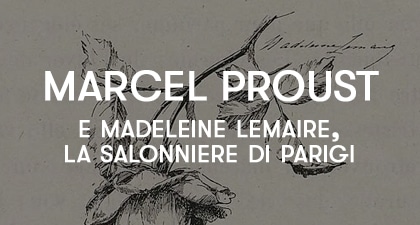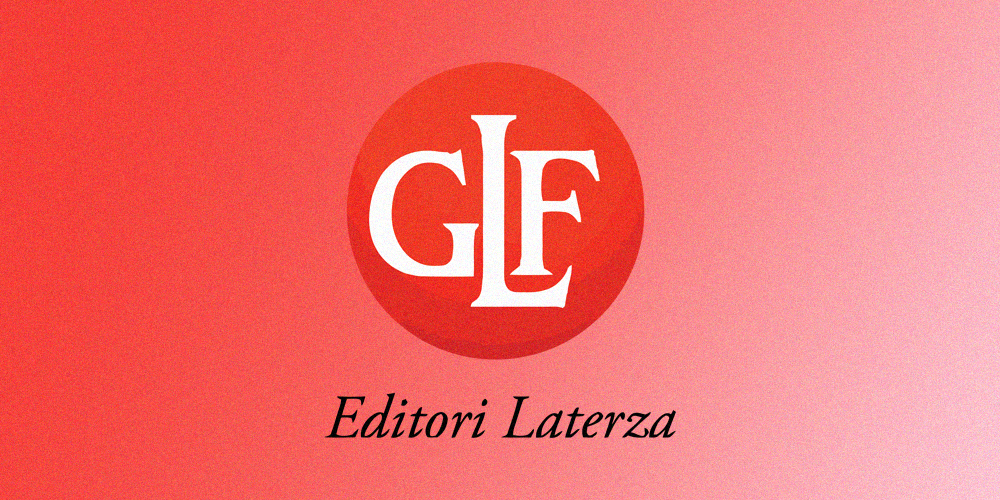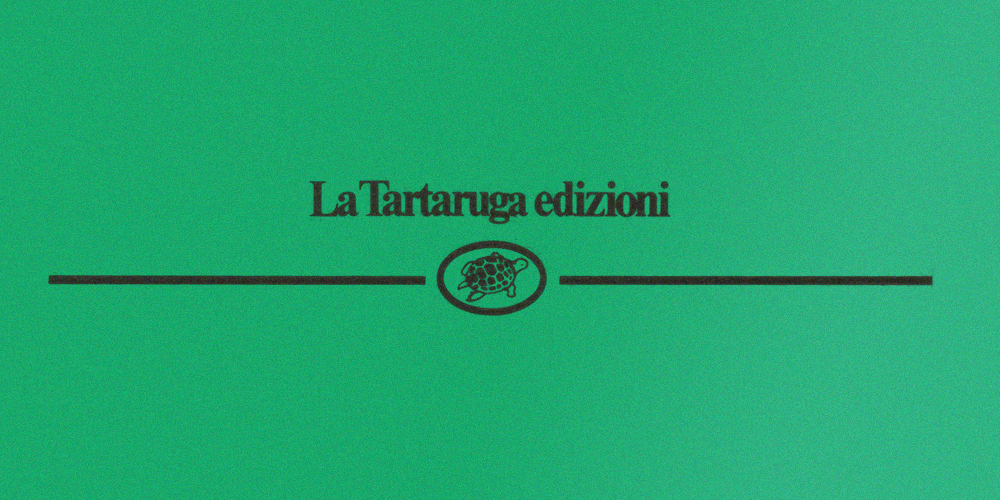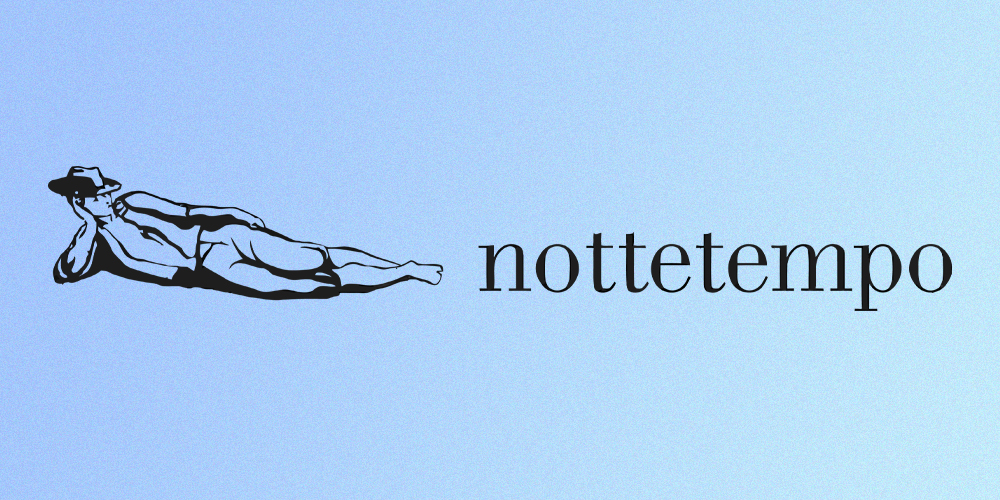
The fifth publishing house in our journey is Bompiani.
“Books are written by someone, who is not him. They are printed, usually, by someone else, who is not him. They are sold by a third person, who is not him. What the publisher contributes, from himself, is love.” Valentino Bompiani

In 1929, Valentino Bompiani founded his publishing house after working with Mondadori from 1925 to 1929. It was a useful but challenging apprenticeship. “His publishing is authoritative. Anyone who tried to be a publisher in the same way, without his elephantine nature, would crush themselves.”
He transitioned through a small Swiss publisher, Unitas, before founding his own company.
He started in Milan with three rooms in Palazzo Durini and a secretary.
The first book published was Don Bosco’s biography by Don Ernesto Vercesi.
“A suggestion that came directly from current events. The Church was preparing to beatify him, but the newspapers spoke little of it. I wanted to know more, and I asked Don Vercesi to write me a biography—not hagiographic but political—of the future Blessed.”
For forty-three years, Valentino Bompiani directed his publishing house.
Bompiani focused on two areas: literary series and encyclopedic collections.
Although the contribution to literature was rich and significant—marked by close, exclusive relationships with authors and high-quality titles—perhaps the greatest and most innovative effort came in the second area, starting with the Enciclopedia Pratica Bompiani, followed by The Dictionary of Authors and Works and finally the series of Literary Almanacs.

The most significant series: La Letteraria, the first and most important series, defined as “Novels, novellas, short stories, poetry collections, essays by modern Italian and foreign writers, chosen from thousands.” It included 530 titles: 240 Italian and 290 foreign.
Without numbering or indication of the series name on the volumes, it continued for all 43 years of Valentino Bompiani’s tenure.
It presented its authors in a distinct graphic style—both in paperback and illustrated hardcovers—and is one of the richest collections of first editions of major 20th-century Italian authors and first translations of American, English, and French writers.
Pantheon began in 1940. Large anthological volumes of major foreign literatures: Russian, German, Spanish, American. The curators were not only highly qualified specialists but refined writers such as Landolfi, Traverso, Bo, and Vittorini.
A controversy arose with ‘Americana’.
The collection, based on realist writers addressing social themes, often in a raw manner, was accompanied by an introduction and commentaries by Vittorini, emphasizing both the novelty and importance of these themes.
After the volume was printed, Pavolini, the Fascist Minister of Popular Culture, rejected it for the editor’s anti-Fascist tendencies.
Protests, complaints, and finally a compromise: a new edition with an introduction and commentaries rewritten by His Excellency Cecchi, an Italian Academician.
Cecchi had to twist arguments considerably to claim that American authors demonstrated the decadence of their race, but he succeeded.
The result was a true bibliographical rarity: the few original copies of the 1941 Vittorini edition, a text still published today by the publishing house and used by students as a reference book.

After La Letteraria, the second most voluminous series—248 titles—was I Delfini.
With its famous cover design by Munari, the collection was not only a major commercial success but a valuable cultural tool due to its affordable price and wide variety of titles.
Encyclopedias to remember: The Dictionary of Literary Works, Characters, and Authors of All Times and Countries is the most important work published by Bompiani.
In 1938, the Dictionary, Bompiani’s major work, was already in development.
The subjects were divided into thirty work sections, sixty section directors, and more than a thousand collaborators.
The work was published between 1946 and 1950.
It was an extraordinary feat of efficiency driven by even greater passion. Only such dedication could result in a decade-long effort, unique in its kind in Italy and Europe.
Valentino’s relationship with authors was truly remarkable. The relationship between Bompiani and his authors went beyond work, often becoming friendships.
He aimed to be as exclusive as possible: publishing all their works, he sometimes bordered on the passionate, in line with his temperament. Zavattini, Alvaro, Savinio, Moravia, Marotta, Brancati, Piovene, Vittorini, V.G. Rossi, Annamaria Ortese, Orsola Nemi, Flaiano, Patti, Bontempelli, Cardarelli, Gatto, Eco.
The list is long and certainly not exhaustive. However, it is more than enough to give an idea of the importance that the ‘Letteraria’ series had for 20th-century Italian literature.
“The writer,” he says, “is the man who climbs a tree, his tree. He finds what he finds: at a certain point, the tree blooms. That’s how Moravia works.”

Moravia was the first major author published by Bompiani. The book was *L’imbroglio. Cinque romanzi brevi* (1937). The relationship continued, one could say, forever. All of Moravia’s books were published by Bompiani: 38 while Valentino was at the helm, and 22 more after the sale of the publishing house. The last, *La donna leopardo* (1991), was published posthumously.

Regarding Umberto Eco, it should be mentioned that not only did he produce *The Name of the Rose*, the best-selling book Bompiani ever published, but he also became part of the publishing house, contributing to its choices and directions.
He was the only collaborator, it seems, to address Bompiani with ‘tu’: he affectionately called him Uncle Val.
We now move on to the chapter on foreign authors, one of the most important for Bompiani as a publisher, especially due to the contributions of American writers, though not exclusively.
“What has been called the discovery of American literature by Italian culture occurred between the late 1930s and early 1940s.
The widespread and impactful presence of that literature in our country began and took shape with the publication of *Of Mice and Men* by John Steinbeck and *Tobacco Road* by Erskine Caldwell.
These two books spoke about humanity, its condition and misery, with direct social and political engagement.”
Bompiani saw an advertisement for *Of Mice and Men* in an American newspaper, requested the book, read it overnight, and asked Pavese to translate it. Vittorini was entrusted with the translation of *Tobacco Road*, while *The Battle* by Steinbeck was translated by Montale.

The importance of foreign works in Bompiani’s production is demonstrated by the constant presence of these authors across all their series.
While in terms of image, American writers define Bompiani, quantitatively it is France that prevails: “I am working a lot with France. I am betting heavily on that card. I believe I have achieved the most important thing in my publishing career these days: I have broken through, and I am breaking through even more in France.” These connections led to the publication of books by Malraux, Camus, Sartre, Gide, Saint-Exupéry, Aragon, Céline, Bernanos.
In terms of foreign books, Bompiani reached another milestone: it was the first Italian publisher to publish *Mein Kampf* by Adolf Hitler.
In 1933, Mussolini and the Italian government paid 250,000 lire of the time for the author’s rights. The edition was first offered to Mondadori, which declined, and then to Bompiani, which immediately accepted. The book was reduced from 800 to 500 pages, and the translation by Angelo Treves was included. Despite being Jewish, Treves insisted on doing the work, even offering to do it for free, saying, “Because everything Hitler will do, you need to know.”
An extraordinary work is the collection of Literary Almanacs.
Initiated in 1925, still under the Mondadori brand, with volumes in octavo format, from 1934 onwards it was published in quarto format (from 1934 to 1942, from 1959 to 1980, as well as occasional volumes in 1986 and 1999).
It is an impressive amalgamation of graphics, advertising, and visual history. The thirty-plus volumes represent one of the most refined sources of 20th-century taste and culture.
The responsibility for composing the Almanac, still during the Mondadori years, connected Bompiani to Enrico Piceni, who co-edited the initial issues of the publication with him from 1925 to 1938.

This friendship led him to embark on another career that always ran parallel to publishing, that of a playwright and theater operator: “I wrote for the theater even as a boy. I used to skip school to go to the library and read Schiller and Shakespeare.”
His first play was The Virtuous Lover in 1930. In the 1940s and 1950s, he wrote his most famous pieces: Albertina, Fear of Myself, Even the Fat Have Honor, and On Sundays We Rest.
In addition to being an author, Bompiani was naturally a publisher of theater, books, and magazines.
‘Theatrical Pantheon’ was born between 1939 and 1941, with Vittorini as its director. The works included Spanish Theater (1941), Italian Sacred Representations (1942), German Theater (1946), Italian Comedy (1947), Religious Theater of the Medieval World Outside Italy (1949), and finally Russian Theater (1955). The editors of the volumes, in addition to Vittorini, included Bonfantini, Pintor, Apollonio, Contini, Alvaro, and Lo Gatto.
Bompiani lived a long life but sold the publishing house in 1972.
An important figure alongside Umberto Eco, after the sale of the publishing house, was Giovanni Reale. Following the bankruptcy of Rusconi Publishers, Reale’s works were incorporated into the Bompiani catalog. During the years when the publishing house became part of the RCS group, it became an opportunity to create an important philosophy series: *Western Thought*. Original texts with translations and meticulous notes by Reale were its hallmark.

Today, after 90 years, the Bompiani publishing house continues to look to the future without forgetting the past, both its own and that of literature: in 2018, it launched a series of classics. In recent years, considerable energy has been devoted to maintaining and curating the catalog, which remains the solid foundation of the brand.
The publishing house is owned by the Giunti Group.
Check out all the books published by Bompiani available in our catalog.
Want to discover more stories about Italian publishing houses?
Here you’ll find all our articles.








